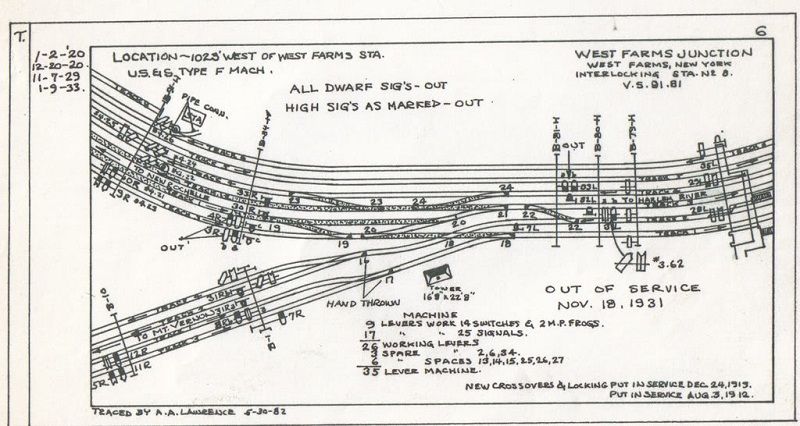It was always my understanding Westchester trains used the outer two tracks on the west side of the Harlem River Branch between SS1 @ Harlem River to SS8 @ West Farms Jct.
Tonight I found a photo of SS8 taken in 1912. It's a view north and clearly shows the begining of Westchester property. What puzzels me is that Westchester tracks #2 & #4 begin by diverging to the west at SS8 from the two middle tracks of the Harlem River Branch. They cross the outer tracks of the Branch, which would be inbound, on hard crossings; maybe movable point frogs but not slips. This begs the question what was the assignment of the inner tracks on the Branch at this location? If they were outbound for Westchester trains were they also inbound for NH traffic to Harlem River / Hell Gate / Bay Ridge? That would make them bi-directional, not impossible but cetrtanly novel at this point in history.
Does anyone have access to information to provide the track assignments on the Harlem River Branch between SS1 & SS8 ?
Tonight I found a photo of SS8 taken in 1912. It's a view north and clearly shows the begining of Westchester property. What puzzels me is that Westchester tracks #2 & #4 begin by diverging to the west at SS8 from the two middle tracks of the Harlem River Branch. They cross the outer tracks of the Branch, which would be inbound, on hard crossings; maybe movable point frogs but not slips. This begs the question what was the assignment of the inner tracks on the Branch at this location? If they were outbound for Westchester trains were they also inbound for NH traffic to Harlem River / Hell Gate / Bay Ridge? That would make them bi-directional, not impossible but cetrtanly novel at this point in history.
Does anyone have access to information to provide the track assignments on the Harlem River Branch between SS1 & SS8 ?
